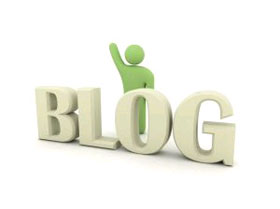Blog Marketing and Traffic Generation
Posted on December 05, 2011 by CJ Article Team

No matter how attractive and interesting your blog is, if you don’t market it and attract readers to it, you won’t make any money. Basically, blog marketing is any activity that publicizes or advertises products, services, a website or business through the use of blogs. However, before you can market on a blog, you have to successfully market the blog itself. If you can’t generate a healthy amount of traffic to your blog, you won’t be able to directly or indirectly market to them.
The key to marketing your blog successfully is consistency and effectiveness. This means that you have to consistently post new, interesting articles to your blog that are relevant to your targeted audience as well as consistently engaging in activities designed to drive traffic to your blog. However, there is a caveat on this last suggestion. Your traffic generation activities have to be effective. To ensure the effectiveness of your blog marketing strategies you need to become well informed about the types of strategies that typically get the best results, consistently apply them and consistently monitor them. You must be willing to drop strategies that do not work and replace them with hopefully more effective ones. It is important that you are not attached to your strategies but to your outcomes. If it doesn’t work, change it. Flexibility is an essential element to blogging success.
Once you have created your blog and have submitted some interesting and unique posts that are designed to pique interest and engage your reader in conversation through the comments facility, you need to get your blog pages indexed in the major search engines such as Google and Yahoo. This process is not automatic and if you don’t take the necessary steps you will have little chance of benefiting from search engine traffic. Generally speaking search engines require you to submit a sitemap, however if your blog is hosted by a service like Blogger you won’t be able to access the root directory to obtain the information. Instead you will need to submit code in a meta-tag. Your blog provider will direct you on how to do this.
Once you have submitted your blog for indexing with the search engines, the next most important step you can take to generate traffic to your blog is to submit it to as many relevant blog directories as possible. This can be a time consuming process so if you can afford it you may find it beneficial to pay a service to manually submit the blog for you. Automatic submission services should be avoided as they do not make allowances for the visual confirmation that is usually needed when submitting a blog to a directory. Blog directories can really pay of in terms of attracting visitors to your blog as long as you list your blog in the correct category and you take care to write a description that accurately describes your blog and appeals to your targeted niche.
These steps may generate one time visitors but it is up to you to keep them. If your blog is not updated regularly with new material it will stagnate. Regular posting is not only important in terms of attracting a loyal readership, it is essential if you want to improve your search engine page rank. The best search engine results tend to go to blogs that are tightly focused on a single niche and give their readers unique information and excellent value.
Once you have followed these basic steps to getting your blog up and running successfully, you can encourage readers and promote loyalty by subscribing to a feed service such as Feedburner. Submitting individual posts to social bookmarking sites such as Digg and Del.icio.us can also bring your blog a decent amount of additional traffic.
Article marketing is another very effective way to drive traffic to your blog. It is a free strategy and produces naturally increasing traffic to your blog over time. However, it is a time consuming strategy which requires regular submission to article directories of articles closely related to the theme of your site and designed to encourage readers to click on your link beneath the article. It is also important that you do not put the same articles on your blog as you do not want your blog to be penalized under Google’s duplicate content rules.
Finally, take a bit of time and post comments on other related blogs that already have solid monthly traffic figures. Make your comments relevant and interesting and include a link to one of your own posts. You can also interact with others on high traffic forums and use your blog address as your signature link. Over time, these links can generate a decent amount of traffic.
Pay per click programs can also be very effective ways to drive traffic to your blog. However, these programs can be costly so you will need to conduct a cost benefit analysis to determine whether the potential profits to be made from the goods or services you are marketing are worth this expense.
If you follow these steps you will be best placed to generate traffic to your blog from which you will gain a growing base of loyal readers. Effective blog marketing will result in visitors to your blog who are interested in what you have to say and therefore who will be more open to the related products and services you are offering. A loyal readership provides you with a source of potential customers for your products, services and affiliate offers. When it comes right down to it, if you have monetized your blog well and you market it effectively, it can make you a lot of money.
Article Source: http://EzineArticles.com/874309
Facebook Comments:


































